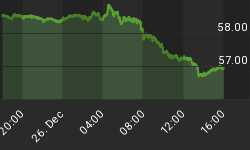1/11/2011 9:10:35 AM
Equity indexes opened lower but bounced off of key support levels to finish higher than they opened...
Recommendation:
Take no action.
Daily Trend Indications:

- Positions indicated as Green are Long positions and those indicated as Red are short positions.
- The BIAS is used to determine how aggressive or defensive you should be with a position. If the BIAS is Bullish but the market is in a Trading state, you might enter a short trade to take advantage of a reversal off of resistance. The BIAS tells you to exit that trade on "weaker" signals than you might otherwise trade on as the market is predisposed to move in the direction of BIAS.
- At Risk is generally neutral represented by "-". When it is "Bullish" or "Bearish" it warns of a potential change in the BIAS.
- The Moving Averages are noted as they are important signposts used by the Chartists community in determining the relative health of the markets.
Current ETF positions are:
In cash.
Daily Trading Action
The major index ETFs opened lower then move in opposite directions with the NASDAQ-100 and S&P-500 immediately trying to rally and with the Dow selling off from the open. All three moved lower in sync after about fifteen minutes and that move lasted only about fifteen minutes to find their intraday bottom. From that point, after some minutes of indecision, the major indexes began to march higher, which lasted until the final half hour when the S&P-500 tried to break into positive territory. That was too much for the bears who sold into the close leaving the Dow and S&P-500 closing lower but with the NASDAQ-100 scoring a gain on the day. The Russell-2000 (IWM 78.97 +0.45) mimicked the NASDAQ-100 and gained nearly six tenths of one percent bouncing off its uptrend line dating back to August 24th. The Semiconductor Index (SOX 430.17 +4.43) added a one percent to Friday's gains. The Bank Index (KBE 26.19 -0.04) was nearly unchanged while the Regional Bank Index (KRE 26.07 +0.30) actually gained one percent. The 20+ Yr Bonds (TLT 92.85 +0.50) gained another one half of one percent. With the exception of the Semiconductor index, all indexes we regularly monitor are now in trading states. The Semiconductor index remains in an uptrend state. NYSE volume lightened a bit further to trade less than a billion shares with just 953M shares traded. NASDAQ volume was average with 1.870B shares traded, declining modestly from Friday's volume.
There were no economic reports of interest released. Instead, traders anxiously await the unofficial start to earnings season with Alcoa (AA 16.49 +0.07) reporting after the close. Alcoa reported better than expected earnings (which was expected by the whisper numbers). Alcoa has risen 25% over the last three months.
The U.S. dollar gave back the three tenths of one percent it gained on Friday as European fixed income markets seemed to steady.
Tech, Industrials, and Materials sectors all gained +0.1%. Consumer Discretionary and Consumer Staples were all unchanged. This left the other five economic sectors of the S&P-500 taking losses led by the Financial (-0.3%) sector.
Implied volatility for the S&P-500 (VIX 17.54 +0.40) rose more than two percent while the implied volatility for the NASDAQ-100 (VXN 18.67 +0.05) was almost unchanged.
The yield for the 10-year note fell three basis points to close at 3.30. The price of the near term futures contract for a barrel of crude oil rose $1.22 to close at $89.25.
Market internals were mixed with advancers edging decliners on the NYSE and with advancers leading decliners by nearly 5:4 on the NASDAQ. Down volume led up volume 4:3 on the NYSE while up volume led down volume 3:2 on the NASDAQ. The index put/call ratio fell 0.62 to close at 1.24. The equity put/call ratio rose 0.05 to close at 0.55.
Commentary:
Monday was all about testing support. When the major indexes moved down to the support of their uptrend lines or the 20-Day Moving Average (DMA), they bounced. The same held true for the Russell-2000. This is usually what happens when the indexes are in trading states. From there, the longer term bullishness won out and all the equity indexes we monitor finished higher than they opened. We note that all three leading indexes (NASDAQ-100, Russell-2000, and Semiconductor index) advanced together to lead the markets higher. Usually, that causes the other indexes to follow.
The key external worry for market participants, as we enter into the beginning of earnings season this week, is what will happen with European bond auctions. Those markets seem to be steadying (for now) which means that the most likely path for the market continues to be higher.
We appears to be getting the attempt to move higher now and remain optimistic that we will find an entry to a short position, although we may have to be patient. We would like to see the major indexes move back up to the tops of their ranges. In this case, that means the NASDAQ-100 will move up to touch its upper uptrend channel boundary and upper Bollinger Band. The Dow and S&P-500 may only move back up to challenge recent highs but we won't enter a short position without a high probability set-up. Keep your powder dry.
We hope you have enjoyed this edition of the McMillan portfolio. You may send comments to mark@stockbarometer.com.
















